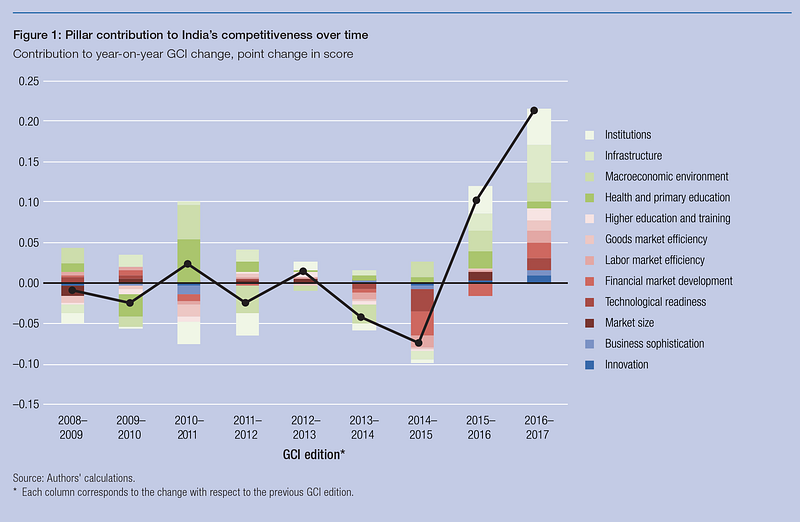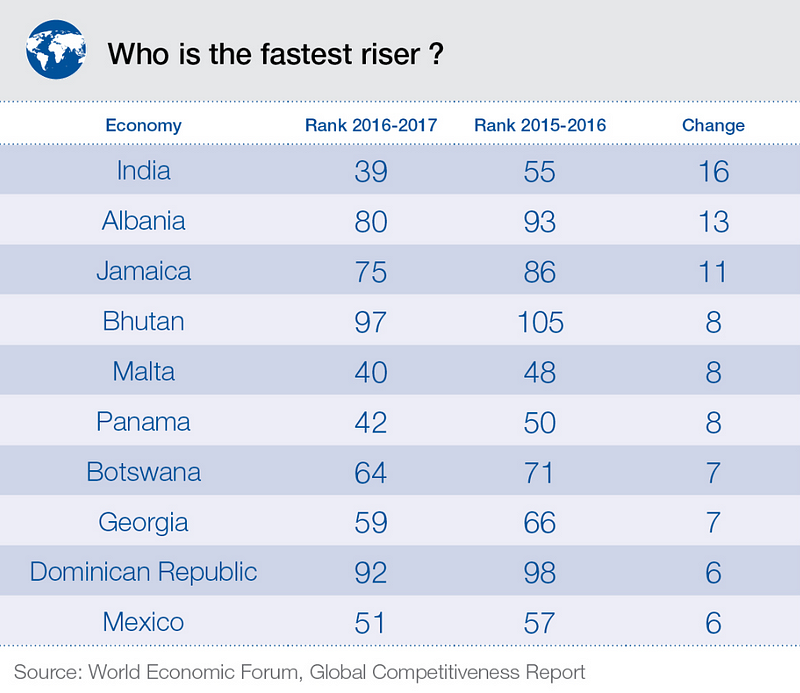What Trump Means for Brexit, China, and the EUby Alasdair Macleod
Mises Daily, January 31, 2017
The easy pattern of prolonged trade negotiations has been rudely interrupted by President Trump. Even before he had become president, his anticipated presence in the White House changed global attitudes and expectations. In Europe, EU officials are wrong-footed, while British trade officials cannot believe their luck.
EU officials were prepared to punish the UK knowing they could prevaricate for ever, because the EU should never, in its view, be challenged by a member state. The UK has been a disruptive member, and other members must be discouraged from following Britain’s exit at a time when there are increasing signs of rebellion by Europe’s "deplorables." Britain, having shocked its own establishment by voting for Brexit, faced the prospect of protracted negotiations with the EU that could, in the words of one British official who has since resigned, take a decade or more.
President Trump has dramatically changed the balance of power in Britain’s trade negotiations with the EU. It is probably no accident that the British approach was finally declared after Trump won the presidential election, and his attitude to trade with Britain was more friendly than Obama’s. The British negotiating strategy is remarkably sensible from a government that hasn’t until now believed in free markets, at least to the extent that it is prepared to back genuine free trade as a policy. Effectively, the EU has been told by Prime Minister Theresa May that Britain will propose, and they can take it or leave it, because Britain’s focus is now to trade relatively freely with the rest of the world. And if they don’t agree, Britain will cut corporation taxes to compensate British-based businesses from EU intransigence.
The threats from members of the European political establishment sound increasingly desperate, signaling they are waking up to the weakness of their position. They claim Britain will be cut out from the EU’s existing trade agreements. But when you look at them, you see there are only two of them with other G20 members — South Korea and Mexico. The rest are with small states, damning evidence of the failure of the EU to interact with the rest of the world. Big businesses in Europe are now switching sides, having unsuccessfully argued against a hard Brexit. They are now lobbying European governments instead for tariff-free trade with the UK.
Trump and Trade
Donald Trump apparently sees himself as bringing business priorities to government. He intends to run America in the manner of a nineteenth century mercantilist, where the priority is that America Inc. must become great again, with every able-bodied person regarded as potential contributors to the national enterprise. With respect to trade agreements, he will tear up the rules agreed between long-winded diplomats in favor of more effective business-driven resolutions, favoring America. Business negotiating strategies will be implemented, as we can see with the early signs of public negotiations between mercantilist Trump and China’s mercantilist Xi.
Britain’s free traders are likely to be at odds with Trump. He is signaling he is not interested in free trade. His attitude to the EU also marks a major change in American geopolitical thinking. Europe is now regarded as a leach, sucking America’s blood, not paying its way in NATO. Its socialism is alien to Trump. That’s the new world, as proposed by Trump, but the reality can be expected to turn out somewhat differently.
Trade Fallacies
All this would be fine, if President Trump based his understanding on the economics of trade imbalances. Like most people, he appears to think a trade deficit is the result of unfair foreign competition. It is not. It is the result of monetary expansion. In a sound money environment, everything is paid for out of real money. If I buy a foreign good, it must be matched by a fellow citizen’s export. If people change their preferences for real money, there will be a temporary surplus or deficit, but prices will rapidly adjust to find a new balance, the flows stop, and trade balances again.
In a sound-money environment, permanent or semi-permanent trade surpluses and deficits cannot exist. With unsound money, in other words if extra money is conjured up out of thin air and spent into the economy, excess demand is created, which either drives up prices domestically, or it is spent on imported goods. And given a country’s total production usually matches its total consumption, that extra money is certain to lead to an increase in imports.
It’s the cheat factor of fiat currency that’s responsible for trade imbalances, not unfair competition from foreigners. And because all countries cheat with their own fiat currencies, untangling the trade surpluses and deficits becomes a fruitless task.
We can conclude that however Trump’s trade policies turn out, America’s trade deficits will not go away. He will need to take a firm grasp of the budget deficit, and the Fed must take tighter control over the expansion of bank credit and money, both of which are unlikely.
Unintended Consequences
The Trump administration appears to be set to discourage imports by the introduction of a border tax, or discriminatory corporate income taxes. We know this will not achieve its objective, unless bank credit fails to grow. And if bank credit fails to grow despite the Fed’s desire for it to do so, a reduction in the trade deficit would be part and parcel of a contracting economy. America would then risk triggering a rerun of the depression of the 1930s, which was given an extra spin from the Smoot-Hawley tariff signed into law by President Hoover. In those days, both the dollar and sterling, as the two leading currencies, started the decade on the gold standard, which continued for the dollar after sterling abandoned it in 1931. This meant that commodity prices priced in both gold and dollars collapsed, impoverishing miners and agricultural producers worldwide. If the same thing happened today, the dollar would go down with commodity prices, because we know the Fed would expand money supply to avoid a slump. But measured in gold, commodity prices would still fall.
For now, this outcome is regarded by markets as a low risk, but given Trump’s contradictory statements on trade, it would be wrong to dismiss a Smoot-Hawley rerun. Trump’s rhetoric is indeed frighteningly similar.
China would be justified in taking the view that Trump’s intentions are protectionist, and therefore represent an escalation of the financial war between the two countries. That will depend on the outcome of negotiations between Presidents Trump and Xi. China could equally console herself with the knowledge that the dollar will become less important if gross American trade (as opposed to the net balance) diminishes because of protectionist measures. For the moment, the dollar is riding high, partly due to the declining use of the euro. But a higher dollar could be regarded as an opportunity for China to sell more Treasuries to invest in commodity stockpiles, before the dollar declines. And when the dollar declines, the yuan is likely to stabilize and become more attractive as a global trade settlement currency.
If, and it is an if, the Chinese take this view, they will not worry too much about Trump and his aggressive stance. He might be surprised that the Chinese give in on very little in the trade negotiations due to take place later this year. Their view could be that Trump is fighting yesterday’s trade war. Instead, China will be content with free trade agreements between the Pacific nations cut out of the Trans-Pacific Partnership. South-East Asia will manufacture the cheap goods China used to make, because China is already upscaling her economy into services and technology, redeploying capital from the manufacture of cheap goods.
Where are Europe and Britain likely to end up in all this? The will for a rapid resolution of an Anglo-American trade agreement is there at both the White House and Downing Street. However, under the terms of Brexit, a deal cannot be signed before March 2019, which is a long time in politics. The threat of a US/UK agreement is more important as a lever to pull the EU into line, than its eventual reality. Additionally, Britain can easily sign agreements with Commonwealth members, comprised of 52 countries and a third of the world’s population. Importantly, these are the growing economies of the future. South Korea, Mexico, and the minor nations that have existing agreements with the EU should also be ready signatories, assuming the EU does not successfully pressure them not to enter agreements with the UK. The ASEAN (Association of Southeast Asian Nations) countries and China total another two billion, again growing more rapidly than the advanced nations, taking the potential total to well over half the world’s population.
The opportunity for Britain presented by Brexit, and facilitated by Trump’s election, is truly extraordinary, but that’s not reckoning with the politics. Politicians do not define free trade in the way that free trade should be. To politicians, free trade is a complex agreement, regulating every provision of goods and services. Free trade without politicians is simple: we can all get on with buying and selling with each other what we truly desire.
The greatest threat to world trade comes not from the break-up of the EU, nor from China. It appears to be Trump’s lack of understanding of why trade imbalances exist, and his wrongheaded policy of American protectionism.
Alasdair Macleod is the head of research at GoldMoney.




